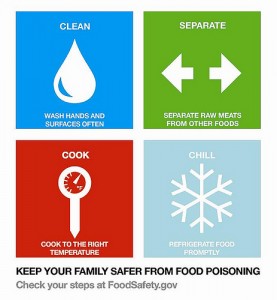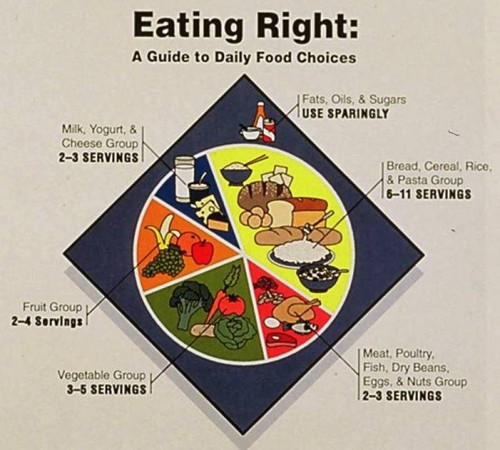USDA’s new food safety campaign: it’s all about YOU
Yesterday, USDA announced its new Food Safe Families campaign to get you to pay attention to food safety procedures in your kitchen. These, as always, are:
- Clean: Clean kitchen surfaces, utensils, and hands with soap and water while preparing food.
- Separate: Separate raw meats from other foods by using different cutting boards.
- Cook: Cook foods to the right temperature by using a food thermometer.
- Chill: Chill raw and prepared foods promptly.
The media campaign, which reportedly cost $2 million, comes with a graphic that can’t be all that expensive:
So what is the $2 million for? According to Food Chemical News (June 28):
The campaign, which will feature public service announcements in English and Spanish, centers on “humorous over-the-top depictions of the four key safe food handling behaviors”….The campaign will include ads on television, radio, print and websites, along with an integrated social media program.
As it happens, a reader sent me the preliminary “concept” version of this campaign (thank you kind reader). Trust me, this campaign is worth a look, and Food Safety News has some of the videos.
Here’s my favorite concept:
Yes, this is a baby pig in a sauna. Humorous maybe, but how will it convince anyone to clean up the kitchen?
Two other points:
- None of the concepts seem to have anything to do with food.
- All of them are about your responsibility for food safety.
But the big national outbreaks we’ve been experiencing lately are from foods that are already contaminated by the time they get to you. Following food safety procedures makes good sense, but that’s not where the problem lies. They would not help you much with contaminated raw sprouts, for example, unless you cook them (not a bad idea these days).
To stop food safety problems at their source, we need a functional food safety system. This means rules that require all producers to follow food safety procedures and a government with the authority and resources to make sure they do.
Will we ever get a food safety system like this? And how bad will things have to get before we do?







